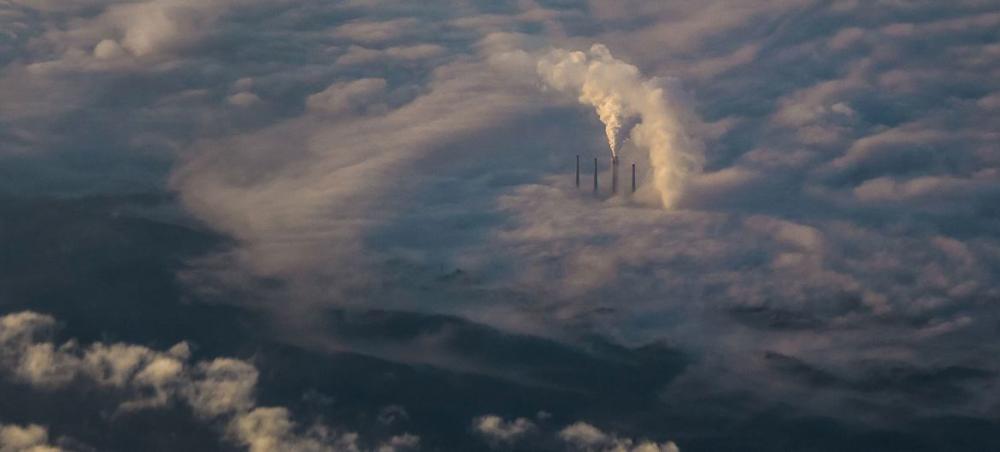Just Earth News | @justearthnews | 28 Oct 2024

Fossil fuel power plants are one of the largest emitters of the greenhouse gases that cause climate change.Photo Courtesy: Unsplash/Nik Shuliahin
New data released by the UN on Monday indicated that greenhouse gases have hit a record high showing once again that urgent action and not words is needed from the world’s major polluters to protect us all from climate change, the World Meteorological Organization (WMO) insisted.
The appeal comes as global leaders prepare to gather for the UN’s Climate Change Conference in Baku next month, amid repeated dire warnings about the human cost of ignoring the existential crisis from UN Secretary-General António Guterres and others.
Echoing the UN chief’s longstanding appeals, WMO Deputy Secretary-General Ko Barrett told journalists that carbon dioxide (CO2) – one of the three main greenhouse gases, along with methane and nitrous oxide - is now accumulating in the atmosphere “faster than at any time experienced during human existence”. Because of the extremely long lifetime of CO2 in the atmosphere, “we are committed to rising temperatures for many, many years to come,” she added.
WMO’s 2024 Greenhouse Gas Bulletin offers a stark, scientific reminder that rising CO2 levels need to be slowed. In 2004, the concentration of carbon dioxide in the atmosphere was 377.1 parts per million (ppm), while in 2023, this reached 420 ppm, according to WMO’s Global Atmosphere Watch Network.
“This is an increase of 42.9 parts per million, or 11.4 per cent in just 20 years,” Barrett explained.
“These are more than statistics," the WMO deputy chief insisted. "Every part per million matters, every fraction of a degree of temperature increase matters; it matters in terms of the speed of glacier and ice retreat, the acceleration of sea level rise, ocean heat and acidification. It matters in terms of the number of people who will be exposed to extreme heat every year, the extinction of species, the impact on our ecosystems and economies.”
Key greenhouse gas-producing events include forest fires and the El Niño weather phenomenon which fuelled drier conditions and a “surge” in gas concentrations in the latter part of 2023, according to WMO. Its analysis shows that just under half of CO2 emissions remain in the atmosphere, just over one quarter are absorbed by the ocean and just under 30 per cent are retained on land.
Wildfires' key role
Senior scientific officer at WMO, Oksana Tarasova, described last year’s wildfires in Canada as “absolutely dramatic” in terms of the amount of greenhouse gases produced. Today’s CO2 levels have not been seen “in the history of humanity”, she said. “The last time we see 400 parts per million of CO2 was three to five million years ago, and during that time, the temperature was three to four degrees warmer” and sea levels 10 to 20 metres higher.
The WMO report pointed out that from 1990 to 2023, radiative forcing – the warming effect on our climate from greenhouse gases increased by 51.5 per cent. CO2 accounted for more than 80 per cent of this increase, according to data from the National Oceanic and Atmospheric Administration Annual Greenhouse Gas Index.
Toxic relationship
“As long as emissions continue, greenhouse gases will continue accumulating in the atmosphere leading to global temperature rise,” the UN agency said. “Given the extremely long life of CO2 in the atmosphere, the temperature level already observed will persist for several decades even if emissions are rapidly reduced to net zero.”
Asked about whether the UN climate conference might be expected to yield tangible commitments from countries, the WMO Deputy Secretary-General noted that politicians worldwide do reference the latest scientific climate findings and forecasts in their public declarations. “So I do think they are listening, the question is to what degree will we see that manifest at COP29 in action,” she said.
Barrett noted that measures taken at a national level to transition to a “lower fossil fuel economy” were massively important to safeguard future generations.
“Even though there is a lag and temperatures will rise, we are not to be dissuaded from action,” she said, “because there will be a transformation and a downward trend in temperature in future. It all just depends on how quickly we take action and how fast we can reduce those temperatures.”